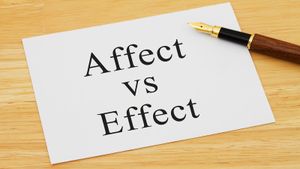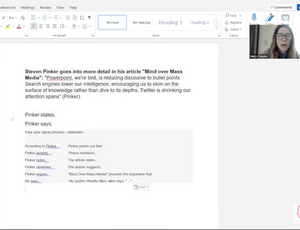Prepositions are words that are used to show the relationship between a noun or pronoun and other words in a sentence. They are important in English grammar because they help us to communicate more effectively and clearly.
In this article, we will explore the basics of prepositions, including their functions, types, and common usage.
Functions of Prepositions
Prepositions have several important functions in English grammar. First and foremost, they are used to show the relationship between a noun or pronoun and other words in a sentence. For example, in the sentence "The book is on the table," the preposition "on" shows the relationship between the noun "book" and the noun "table."
Prepositions can also be used to indicate time, location, direction, and manner. For example, in the sentence "We went to the beach on Saturday," the preposition "on" indicates the time of the action.
In the sentence "The cat is under the bed," the preposition "under" indicates the location of the cat. In the sentence "He walked towards the park," the preposition "towards" indicates the direction of the action. In the sentence "She spoke with confidence," the preposition "with" indicates the manner in which the action was performed.

Types of Prepositions
There are several different types of prepositions in English grammar. These include:
- Simple prepositions: These are prepositions that consist of a single word. Examples include "on," "in," "at," "by," "with," and "for."
- Compound prepositions: These are prepositions that consist of two or more words. Examples include "in front of," "on top of," "out of," and "according to."
- Phrasal prepositions: These are prepositions that consist of a verb and a particle. Examples include "look after," "put up with," and "get on with."
- Participial prepositions: These are prepositions that consist of a participle and a preposition. Examples include "concerning," "regarding," and "including."
- Double prepositions: These are prepositions that consist of two prepositions combined. Examples include "from behind," "in between," and "up to."
Common Usage of Prepositions
Prepositions are used in a wide variety of contexts in English grammar. Some of the most common ways in which prepositions are used include:
- Time: Prepositions are often used to indicate the time of an action. For example, "at," "in," and "on" are commonly used to indicate time. Examples include "at 6 pm," "in the morning," and "on Monday."
- Location: Prepositions are often used to indicate the location of a person, place, or thing. Examples include "in," "at," and "on." Examples include "in the house," "at the park," and "on the table."
- Direction: Prepositions are often used to indicate the direction of an action. Examples include "towards," "away from," and "to." Examples include "walking towards the store," "running away from danger," and "going to school."
- Manner: Prepositions are often used to indicate the manner in which an action is performed. Examples include "with," "by," and "in." Examples include "eating with a fork," "painting by hand," and "driving in a car."
- Purpose: Prepositions are often used to indicate the purpose of an action. Examples include "for," "to," and "in order to." Examples include "studying for an exam," "going to the gym to exercise," and "working in order to earn money."
- Possession: Prepositions are often used to indicate possession. Examples include "of," "belonging to," and "possessed by." Examples include "the pages of the book," "the car belonging to John," and "the idea possessed by the author."
- Comparison: Prepositions are often used to indicate comparison. Examples include "like," "as," and "than." Examples include "She sings like an angel," "He runs as fast as a cheetah," and "She is taller than her brother."
- Cause and effect: Prepositions are often used to indicate cause and effect. Examples include "because of," "due to," and "as a result of." Examples include "He was late because of traffic," "The cancellation was due to bad weather," and "As a result of the fire, the building was destroyed."
Common Preposition Errors
Even though prepositions are essential in grammar, they can be tricky to use correctly. Here are some common preposition errors to watch out for:
- Confusing "in" and "on" when indicating time or location. For example, "in the table" instead of "on the table" or "in Monday" instead of "on Monday."
- Confusing "between" and "among." Use "between" when referring to two people or things and "among" when referring to three or more. For example, "between John and Mary" and "among the students."
- Confusing "to" and "too." "To" is a preposition indicating direction, purpose, or destination, while "too" means "also" or "excessively." For example, "going to the store" and "eating too much."
- Confusing "in" and "into" when indicating movement. "In" indicates a stationary position, while "into" indicates movement towards a destination. For example, "The cat is in the box" and "He put the cat into the box."
- Using the wrong preposition after a verb or adjective. For example, "disappointed with" instead of "disappointed in" or "interested on" instead of "interested in."
Conclusion
Prepositions are a fundamental aspect of English grammar that help to communicate relationships between nouns and other words in a sentence. They have various functions, including indicating time, location, direction, manner, purpose, possession, comparison, and cause and effect. However, prepositions can also be tricky to use correctly, so it's essential to be mindful of common errors. By mastering the basics of prepositions, you can improve your writing and communication skills and avoid common mistakes.
Frequently Asked Questions (FAQs) And Answers Related To Prepositions
What is a preposition?
A preposition is a word that shows the relationship between a noun (or pronoun) and another word in the sentence. It usually indicates the location, time, manner, purpose, possession, or direction of the noun.
What are some common prepositions?
Some common prepositions in English include "in," "on," "at," "to," "with," "by," "for," "from," "of," "about," "under," "over," "through," "across," "between," and "among," among others.
How do I know which preposition to use?
The choice of preposition depends on the context of the sentence and the relationship between the nouns (or pronouns) in the sentence. For example, if you want to indicate location, you might use "in" for a closed space and "on" for a surface. If you want to indicate time, you might use "at" for a specific time and "in" for a more general time period. It's important to pay attention to common usage and idiomatic expressions when choosing prepositions.
Can prepositions end sentences?
It is generally considered incorrect to end a sentence with a preposition, although this rule is often ignored in everyday speech and writing. In formal or academic writing, it's best to rephrase the sentence to avoid ending with a preposition.






